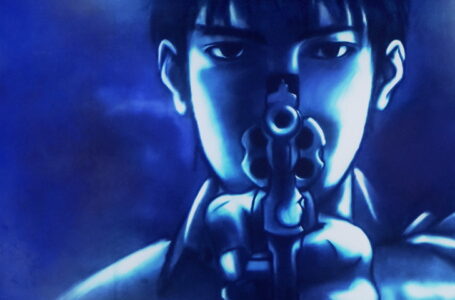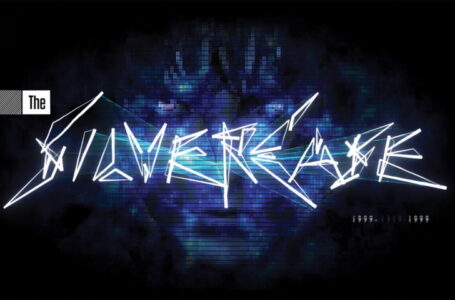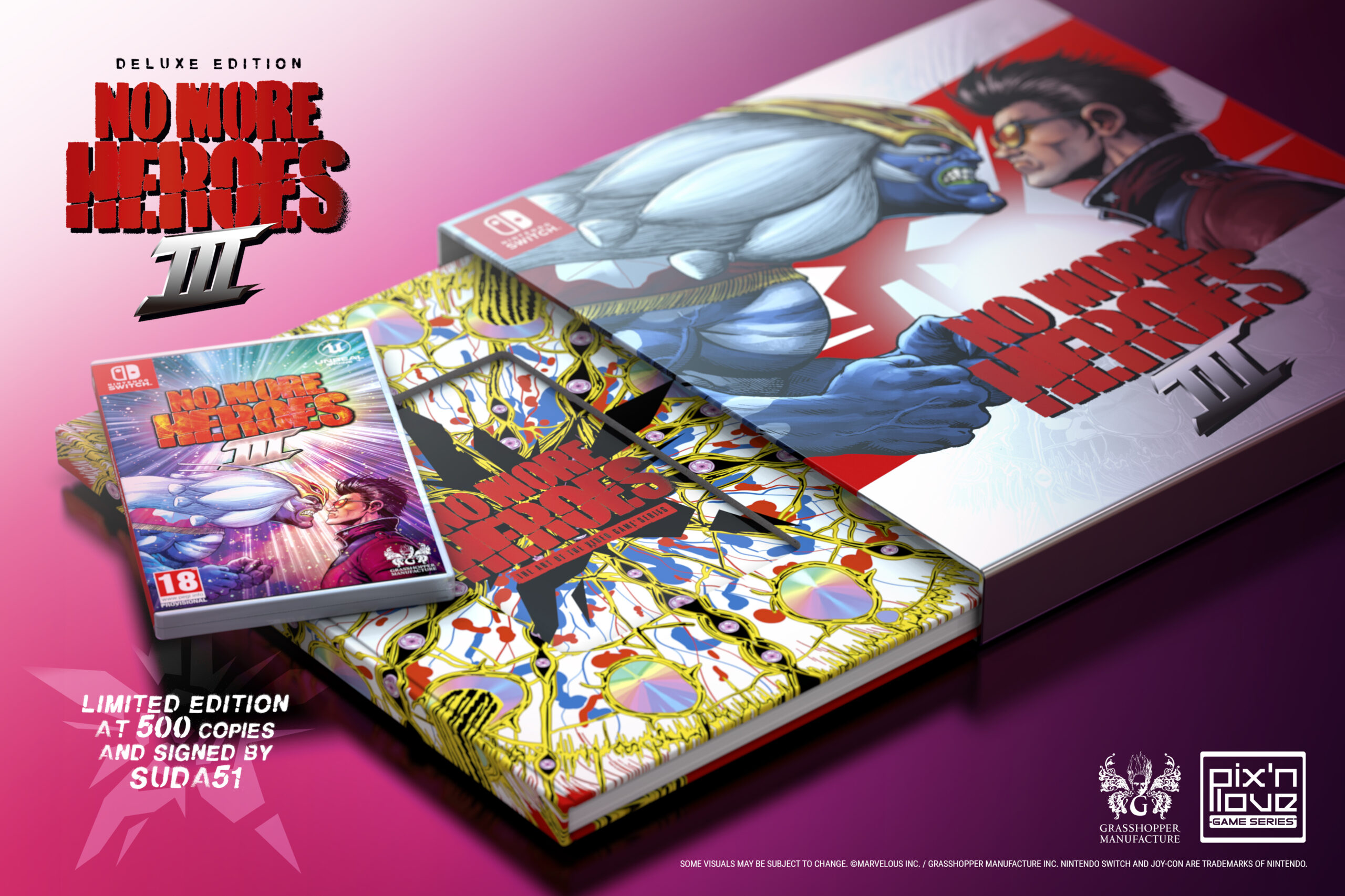Auteur Analysis: Goichi “Suda51” Suda
As a fan of movies and film studies, the lessons taught to appreciate filmography has opened my eyes up to noticing and appreciating certain creator’s unique visions with their products. Movies and video games had starting blurring the lines of interactiveness already in the past 3 decades, from early FMV video games, to the more recent choice important narrative styles (Life is Strange, The Wolf Among Us, Heavy Rain).
Since 1987, when Hideo Kojima released the very first Metal Gear title, the connection between auteur and video games was established, furthering the magnitude of a creator’s vision in single-handedly creating a piece of highly influential and important interactive experience that went beyond a movie and interactive video game. Since then, names as famous as Final Fantasy’s Hironobu Sakaguchi and Fumito Ueda of Team Ico notoriety (director and designer of Ico, Shadow of the Colossus and later worked on The Last Guardian), have also been commented on as being video game auteurs. This list also includes my personal favourite example of this, Suda51, who to me is the most unique of the bunch. Want to find out why?
What makes Suda51 an Auteur?
Suda51’s works usually involve dark themes and narratives, which cross over with every title under his belt, formulating common features of his works that importantly identifies the video games as his creation. For example, in relevance to movies, let’s bring up the classic Hitchcock as our prime example. What makes his style so individual? Is it his mastery in creating tension filled thrillers? Is it his exceptional POV style narration? Or is it his common usage of MacGuffin’s to progress the plot by many different means from inanimate objects to a person? The answer is every single one of these, and plenty more reasons.
The three key factors to remember when identifying an Auteur are:
Does the product have the creator’s signature style?
Is it immediately recognisable as their individual creation?
Do they have a specific level of overall control over the product?
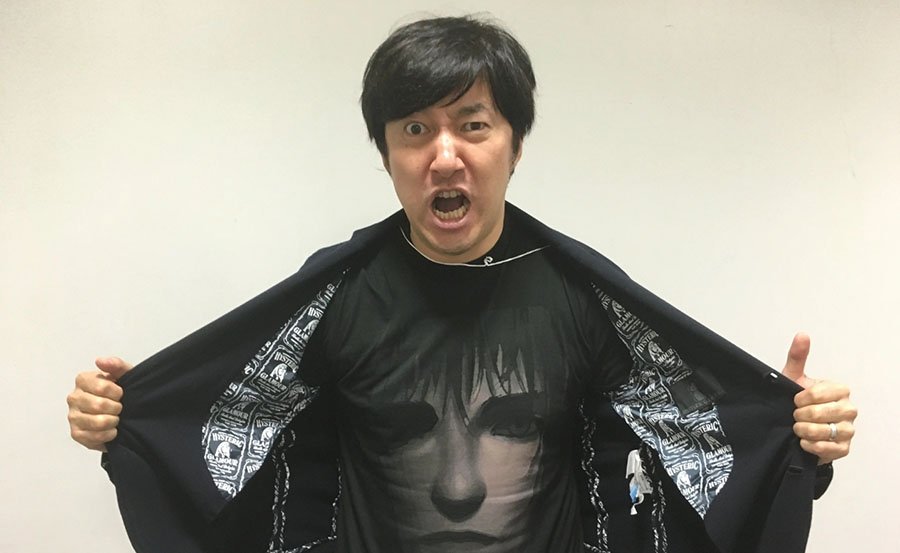
There is so much to gush over Suda51 when it comes to this. Firstly, he stands out as an auteur is his ability to link his video games, no matter how mundane or loose it may be. The earliest example of this is his “Kill the Past” series, a term coined by fans who noted connections between three of his earliest works; The Silver Case, Flower, Sun and Rain, and killer7.
As director and writer of all 3 titles, common elements Suda51 would continuously please fans with had already become staple aspects of any video game with his name on it. Characters would acknowledge characters outside of their own game, and even cross paths in “Kill the Past”. Furthermore, Suda51 would later be quoted in saying that “all his games exist in one world”, fuelling even more recurring aspects and parallels that run rampant in his many games. Now let’s get into the chunky information dump for the all important auteur elements when it comes to Suda51.
Style, Substance, and Suda51
It’s not hard to tell that looking at killer7, No More Heroes, and Killer is Dead that it’s by the same guy, is it? Suda51’s character designs, over-the-top action and style are particular to his game making. His distinctive style is often described as “B” (budget) video game, the equivalent to B movies, best exemplified with the more recent games of Lollipop Chainsaw and Shadows of the DAMNED. As I said with Hitchcock’s many ways he films his works are indications of his signature style, such an example in Suda51’s work is the way he introduces his villains in many of his action games in single frames (No More Heroes, Lollipop Chainsaw, killer7)
However, this has unfortunately been shifted to the side in favour of more typical cuts and transitions. Such original style choices shaped Suda51 into the auteur many regard him as, much like how he will more often than not incorporate a video game level within the video game to create an inception like experience (Lollipop Chainsaw, Killer is Dead, No More Heroes, LET IT DIE). These become expected ingredients of a Suda51 video game, making for a lot of experimenting with how he implements such stages, and how well it plays in combination to the main game. And this is precisely why I wanted to talk about his works.
As I said before, Suda51’s games often delved into the same themes shared with many of his titles. Revenge, death, retribution, karma and rebirth are just a few you can notice from merely taking a look at the synopsis of his titles. killer7 would make this initial appearance of such themes for western consumers, welcoming many newcomers to the bizarre world of Suda51 in one of his most successful entry (alongside No More Heroes, of course).
killer7 showcases how originally experimental his design leadership was. From changing its game styles and narration through 7 different assassins, and always jumping from one genre to the next from a railshooter to a first person shooter with puzzle segments, and a whiplash of comedic moments to more darker revelations, these are some of the most prolific aspects to identify a quintessentially Suda51 game.

The next title to have as much impact would be No More Heroes, which introduced a more open world exploration and filled with side quests and mini-games, being overall just as stylised as his previous works. However, something worthy of note is the more janky controls in the action segments compared to killer7. This would begin a slow, downward spiral of lesser inspiring or impressive entries by Suda51, but I would argue still worthy of attention. His ability to deconstruct cliches and tropes juxtaposed his darker stories by usage of comedy to make such quips and jabs towards both the medium and his own games as humorous and breaks from its dark material.
Themes, tropes, and trademarks, oh my!
Suda51 jam packs all his games with noticeable references and callbacks to his works, if you keep your eyes peeled for them. It can be as simple as a number 51 appearing as a reference to his nickname, Suda51, of course, to a recurring element as simple yet humorous as his tendency to implement a suitcase in many of his titles (a lovely Quinton Tarantino reference I like to imagine).
These recurring elements adds even more discussion to Suda51 being an Auteur. When it comes to character recurrences, Suda51 uses many different means to implement a character the audience either loves or hates, be it for fan service, shock factor, or as another Suda-ism you can expect in any of his works. The particular type of character such as an Assassin is one of the most notable features of his works, 7 of course appearing in killer7, with an overall total of around 10 featuring in different Suda51 games. This same type of design choice is also made with his wrestler and masked character designs, as well as his ability to more often than not implement a talking head, such as Juliet’s boyfriend in Lollipop Chainsaw, and Johnson from Shadows of the DAMNED.

In line with his gradual shift from serious to comedic, Suda51 uses tropes often seen in films, a more obvious one to feature quite often being the breaking of the fourth wall. This popular trope to start gracing video games arguably started receiving attention due to the highly popular free-to-play visual novel Doki Doki Literature Club, and even the critically acclaimed Undertale popularised it for a newer generation of players (with Metal Gear Solid being one of the earliest video games to do this).
Suda51’s most obvious example of this is No More Heroes’ main character Travis Touchdown, who often speaks to the player during cutscenes throughout the games, delivering tongue-in-cheek remarks as he’s confronted with an enemy or even his own toilet, consciously acknowledging his and our own world. Shadows of the DAMNED’s main character’s side kick Johnson delivers laugh-out-loud dialogue at every given opportunity, the humour being even more effective in its setting by the game’s more obvious darker world and story. In my favourite example of this is in his little known hidden gem of an oddball JRPG, Contact on the DS, with one of my favourite finale surprises delivered within a video game.
Arguably the very best of Suda51 are the film noir styled earlier entries of the company. The Silver Case is one of the most stylised entries in the visual novel genre to date, and killer7, No More Heroes and Killer is Dead have become immediately recognisable as Suda51 titles for their unique art style. Later titles would become more identifiable as the wacky action based games with juvenile humour and comedically over the top characters as telling signs it is a Suda51 game.
This is something I touched upon when discussing the shift since No More Heroes in Suda51’s design and gameplay mechanics, showcasing how his past titles had the most freedom to experiment as seen with killer7, it being one of his most successful products. Come to his more recent works, there has been more constricted ideas that involves more voices and contributions on top of Suda51’s. These would no longer poke fun at video game tropes, nor challenge expectations, sometimes even being too on the nose in its delivery (Lollipop Chainsaw).
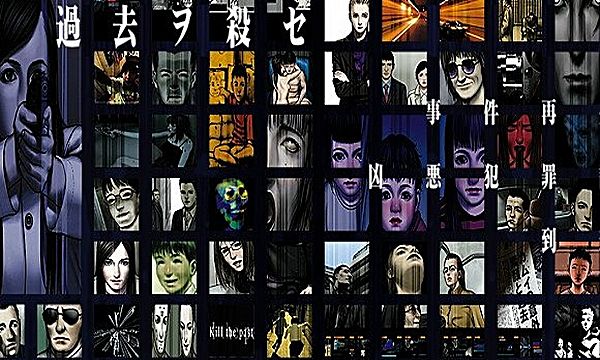
Why should we care?
Auteurs continue to provide their own unique vision and life lessons into each of their products that more often than not are effective story telling pieces with a lot of heart and care put into them. They each offer something new, but at the same time always hold onto what made the creator’s original works so wonderful and individual. From his lesser talked about video games such as the incredibility underappreciated RPG oddball Contact for the DS, and his experimental, hybrid anime short/video game Short Peace on the PS3, Suda51 stays mostly faithful to his visions and creates unique experiences time and time again. This is despite many more recent hold backs by company handling of recent times.
In a world almost completely plagued by ideas that have already been done and even done excessively to the point of beating a dead horse, the haven that is Suda51 is a blessed place of creativity and never ending potential. Here’s to Suda51 coming back to the forefront for even more deserving attention.
So this leaves me with just one question; Who else is looking forward to No More Heroes III release? Thanks for reading!
Join The Discussion
Rice Digital Discord
Rice Digital Twitter
Rice Digital Facebook
Or write us a letter for the Rice Digital Friday Letters Page by clicking here!
Disclosure: Some links in this article may be affiliate links, which means we may earn a small commission if you make a purchase after clicking on them. This is at no additional cost to you and helps support Rice Digital!
- Sigh of the Abyss: Shadow Bonds – Prologue Review - October 7, 2023
- Is She The Wolf? is wickedly addicting TV - October 6, 2023
- The steady consumption of Slow Damage - October 5, 2023




